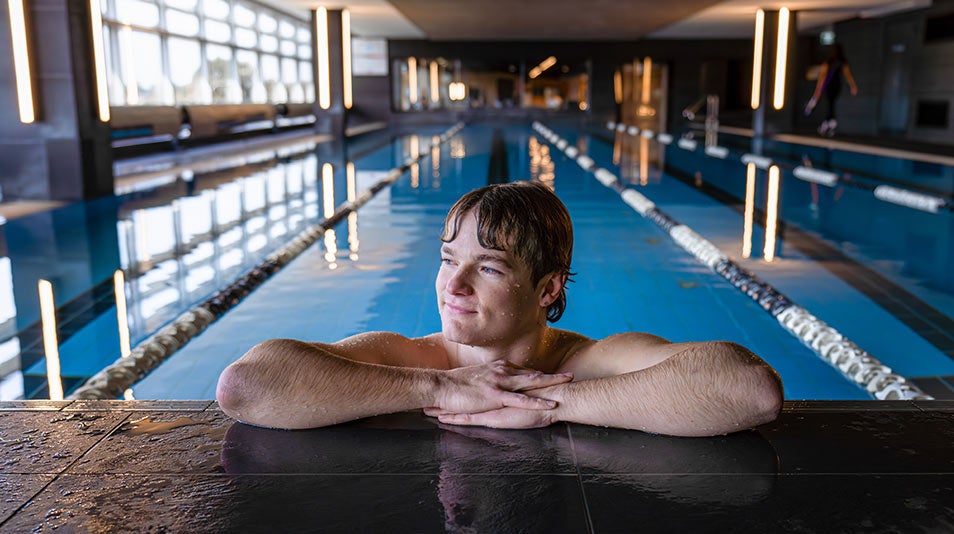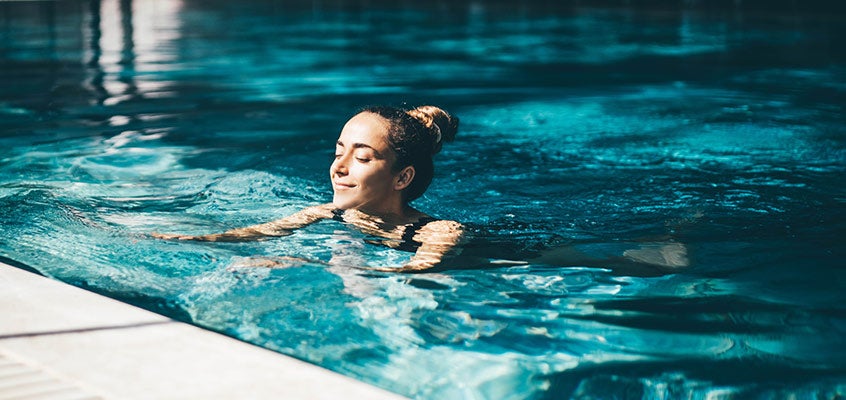Low-impact exercises for returning to the gym
by Sam Higham on Monday 09 September 2024
3 min read
Exercise is meant to be sustainable. That’s why if you’re returning to the gym after a hiatus, it’s important to ease back into it, especially after recovering from injury. Low-impact exercises are the solution. Here are 4 low-impact exercises that will get you back into the gym and back to the best version of yourself.
Swimming – the perfect low impact cardio exercise
Swimming is a great low-impact exercise. The buoyancy of the water supports the body, which is important if you have pain in your hip, knee or lower back. Moving your joints regularly keeps them lubricated, reducing the stiffness you might experience when returning to the gym. It’s not only considered a good low-impact exercise, swimming is also important for general health.
Freestyle
Freestyle swimming offers a comprehensive full-body workout while being gentle on the joints. This can make for a good aerobic and muscular challenge for those returning to the gym, improving cardiovascular health, building endurance and muscle in one combined low-impact exercise.
Breaststroke
Breaststroke is the perfect swimming stroke for a slower, more controlled movement. Breaststroke is ideal for those easing back into exercise, as it requires less effort, making it a gentler exercise. It’s also just a leisurely way to swim!
Yoga – a gentle exercise with group support
Invented 5,000 years ago and we’re still doing it. Yoga is the perfect low-impact exercise if you want to return to exercising in a supportive environment. Yoga is celebrated for its wide range of health benefits, as well as its ability to help those with health issues. There are various types of yoga; we’ve written a great article to help choose which type of yoga practice is right for you.
Hatha yoga
Hatha yoga is a popular low-impact workout that's ideal for those returning to the gym. Our Yoga Align class is based on Hatha Yoga and it focuses on your form and gradual progression. This allows individuals to build strength and flexibility as they go without straining their joints. It also gives participants time to reflect, allowing 5-10 breaths in each pose to observe the specific placement of your body.
Yin yoga
Yin yoga involves holding postures for longer periods, allowing for deep stretches that target the connective tissues. That’s why we call it Yoga Calm: it’s just that bit more relaxing. The 5-minute seating and reclining poses are combined with guided meditation and breath work.
Pilates – the ultimate mobility support exercise
Pilates was created by Joseph Pilates to help rehabilitate people who were affected by injury – the definition of low impact exercise. It focuses on core strengthening, improving posture and the mind-body connection to reduce the risk of injuries and encourage gradual improvement. Pilates is a mobility exercise where big wins come from little movements.
Mat Pilates
All you need is a mat and gravity. Mat Pilates is performed on the floor using body weight for resistance. It's all about building strength by starting small and fine tuning your form as you go. To be more technical, it builds strength by fine-tuning neuromuscular patterns.
Reformer Pilates
Reformer Pilates has become very popular over the last few years - for great reasons, too. It uses a specialised bed that allows you to adapt the resistance as you need. The controlled movements provided by the reformer minimise stress on joints and muscles, making it a suitable option if you’ve experienced injuries or joint pain. The intensity can also be easily adjusted, allowing for a gradual progression that suits different fitness levels. If you're coming back after a while, or even just starting out in your Reformer Pilates journey, we suggest booking into our Reformer - Foundations class or Reformer Recovery.
Walking – keep it simple
Sometimes you’ve just got to keep it simple. Walking is a great way to improve or maintain your overall health. Just 30 minutes of walking every day can increase cardiovascular fitness, strengthen bones, reduce excess body fat, and boost muscle power and endurance. Whether that’s walking on the treadmill, or even walking to your next Virgin Active class, it’s the best way to start exercising. Just put one foot in front of the other.
These may be low-impact workouts, but it’s important to learn what works for you and your body, especially during times where your body might need the extra TLC. Get the most out of your workouts and let us help you with our experienced Personal Trainers.
Related articles
Nourish
2 min read
Understanding nutrient density (and why it matters)
Move
3 min read
The ‘I don’t feel like working out’ plan
Unwind
3 min read
Can rest days make you stronger?
Enjoying our blog?
Sign up to our newsletter to get updates on training, healthy living, news and events.






